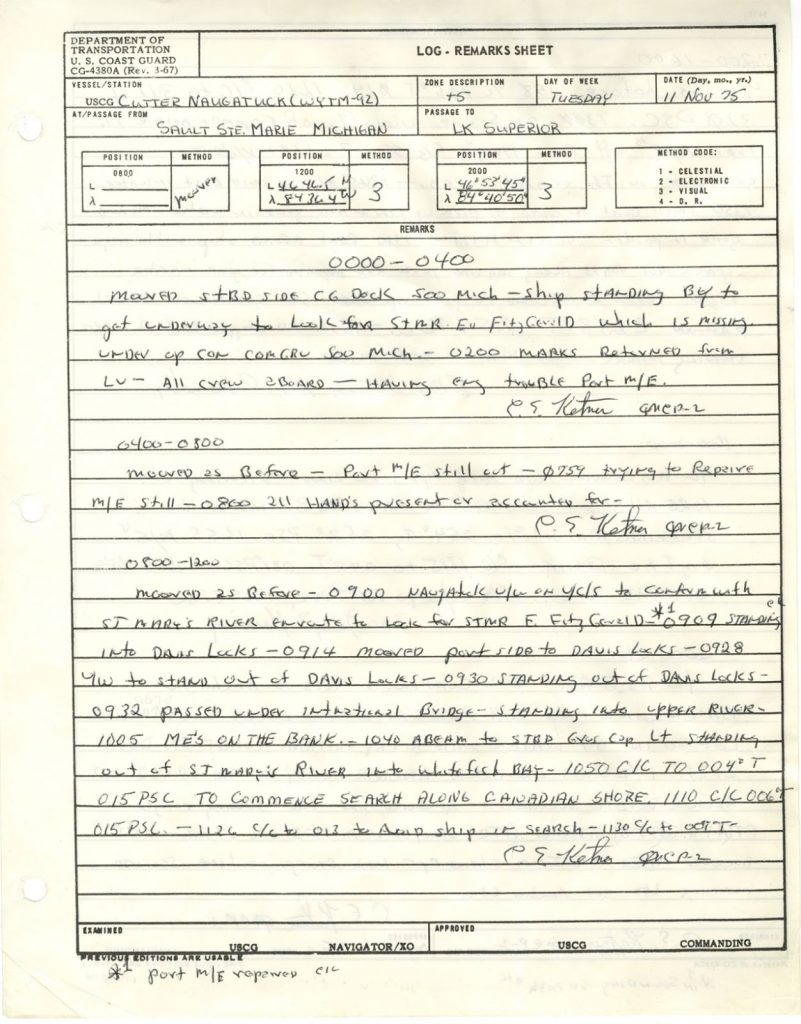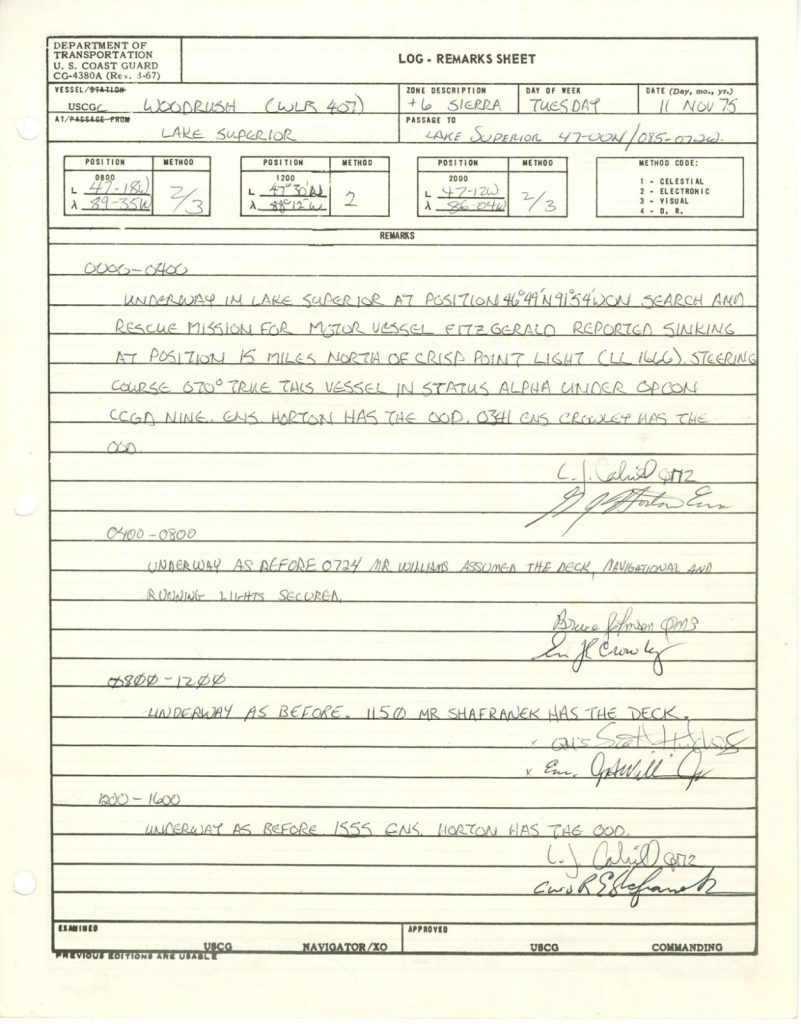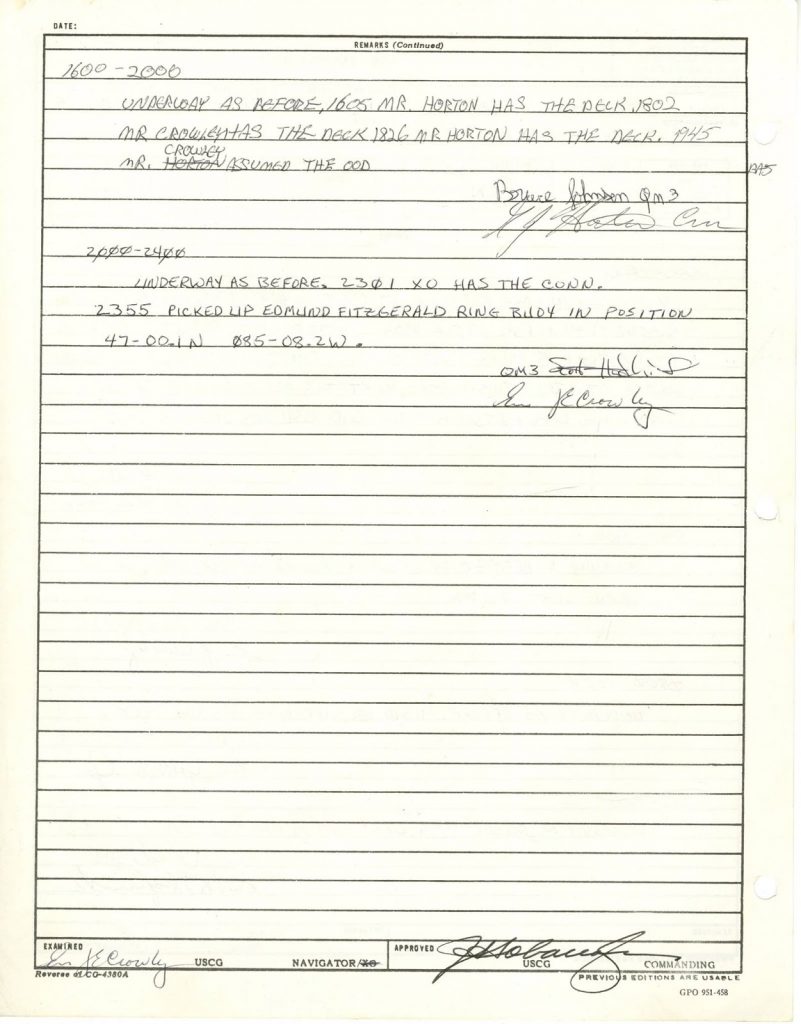The legend lives on from the Chippewa on down
Of the big lake they call Gitche Gumee
The lake, it is said, never gives up her dead
When the skies of November turn gloomy
With a load of iron ore twenty-six thousand tons more
Than the Edmund Fitzgerald weighed empty
That good ship and true was a bone to be chewed
When the gales of November came early
The ship was the pride of the American side
Coming back from some mill in Wisconsin
As the big freighters go, it was bigger than most
With a crew and good captain well seasoned
Concluding some terms with a couple of steel firms
When they left fully loaded for Cleveland
Then later that night when the ship’s bell rang
Could it be the north wind they’d been feelin’?
The M/V Edmund Fitzgerald really was the pride of the American side. At the time, it was the largest ship in the largest US-flagged fleet on the Great Lakes. Launched in 1958, the Edmund Fitzgerald was 729 feet long and had a beam of 75 feet. It was the flagship of the Oglebay Norton Corporation fleet. The company, started in 1854 as an iron ore agency, begain sailing the Great Lakes in 1921 with 11 ore boats.
Part of my interest in the Edmund Fitzgerald and the Oglebay Norton Corp. was that my first cousin Meredith sailed on their ships from the 1960s into the 1980s. My cousin, who has been known to stretch the truth a time or two, told me that he was supposed to be on the Fitzgerald but missed his sailing and thus was on the steamer Arthur M. Anderson which followed her. The Anderson was the last ship to have contact with the Fitzgerald before it sank. Nonetheless, I have no doubt that Meredith knew many of the sailors on the Fitzgerald and lost some friends when it sank.
November storms on the Great Lakes are known to be horrendous. Since the Edmund Fitzgerald sank, ships on the Great Lakes don’t head out when a storm is expected.
The wreck shook Great Lakes shipping to its carlings. To this day, 35 years later, freighters won’t get underway on Lake Superior if there’s a storm in the forecast, said Laura Jacobs, archivist for the Lake Superior Maritime Collection at the University of Wisconsin-Superior.
“They became much more cautious,” she said. “When they put out a weather report now, ships don’t move. The [Superior] harbor was stuffed” before and during last month’s storm, in which a buoy recorded 19-foot waves on the lake.
Lake Superior’s water is so cold year round that people who fall off boats and ships often die before rescuers can reach them, even in midsummer, Jacobs said, so storms are not to be trifled with.
“Navigation on the lakes is a real different animal,” she said. “We have captains that come up from the oceans and say they would rather be on the Atlantic than deal with the storms here. They’re talking about storms in the North Atlantic, and ours up here are worse.”
You can get an idea of what the storm and seas were like listening to this conversation between the captain of the Arthur M. Anderson and the US Coast Guard. They were asking him if he could go back out into the storm and search the area where the Edmund Fitzgerald disappeared.
The primary searchers for the Edmund Fitzgerald were the US Coast Guard cutters Naugatuck, a 110-ft tug, and Woodrush, a 180-ft buoy tender. They found an oil slick, some debris from the deck such as life rings, and not much more. The Duluth News Tribune has some accounts of the search and memories of the ship here.
I came across the deck logs of both the Naugatuck and Woodrush today from November 11th which details in sparse terms their search. The second log page from the Woodrush notes that they found a ring buoy.
 |
| USCGC Naugatuck Log |
 |
| USCGC Woodrush Log (page 1) |
 |
| USCGC Woodrush Log (Page 2) |
It is hard to believe that it has been 40 years since the Edmund Fitzgerald sank. It was my freshman year of college and I can’t believe that was 40 years ago either.
When the ship sank, it took with it 29 men. These were hardy men who worked in all sorts of weather conditions. I can’t imagine the terror they felt in their last moments as the ship sank. As Gordon Lightfoot concluded in this anthem to them:
In a musty old hall in Detroit they prayed
In the Maritime Sailors’ Cathedral
The church bell chimed ’til it rang twenty-nine times
For each man on the Edmund Fitzgerald
The legend lives on from the Chippewa on down
Of the big lake they call Gitche Gumee
Superior, they said, never gives up her dead
When the gales of November come early

.jpg)

Thank you for the post. I was on the Pacific a few times aboard a ship larger than the Fitzgerald when typhoons were visiting. I tried to not think of what those men went through.